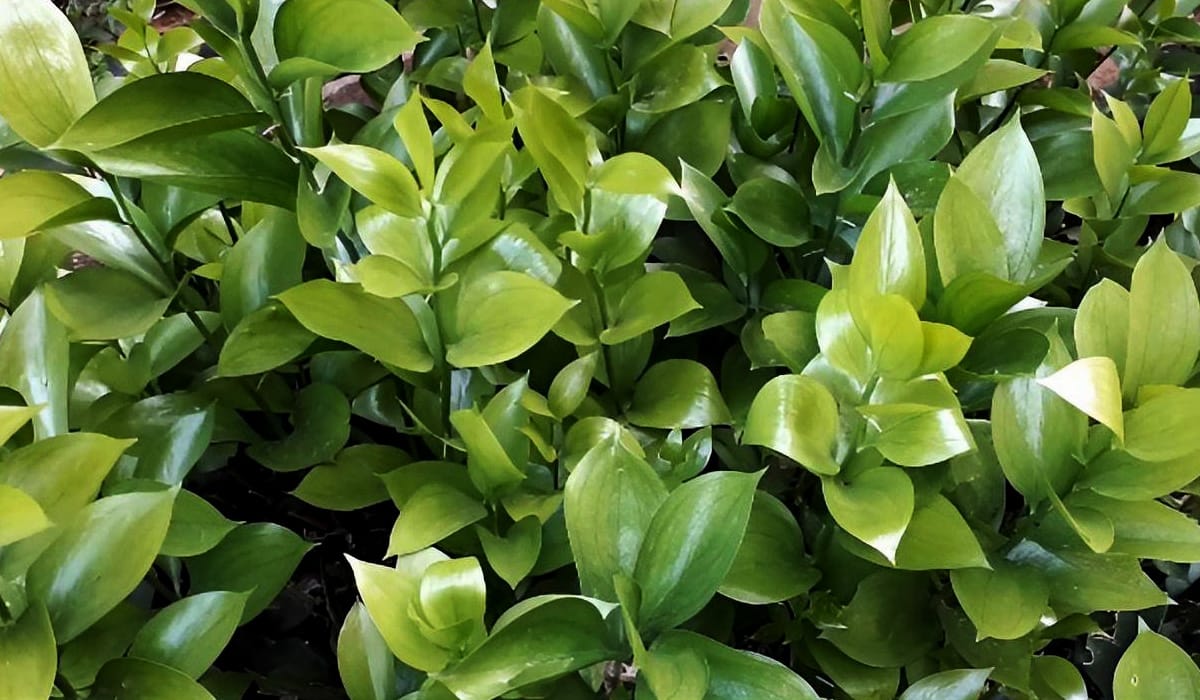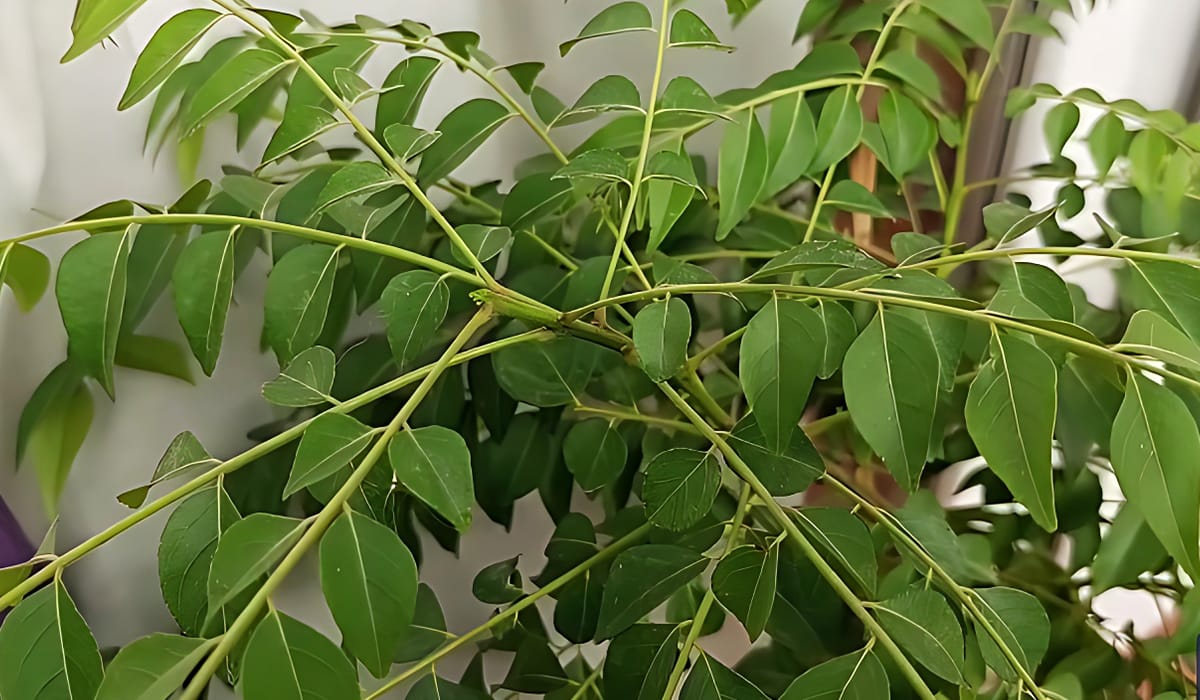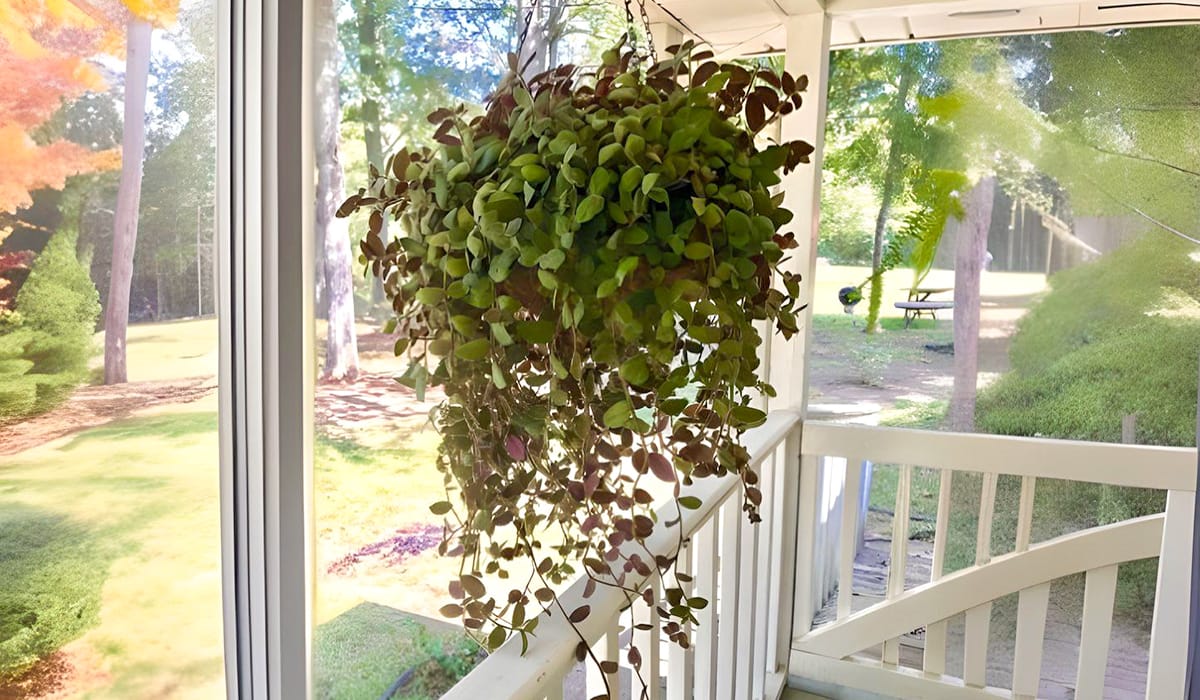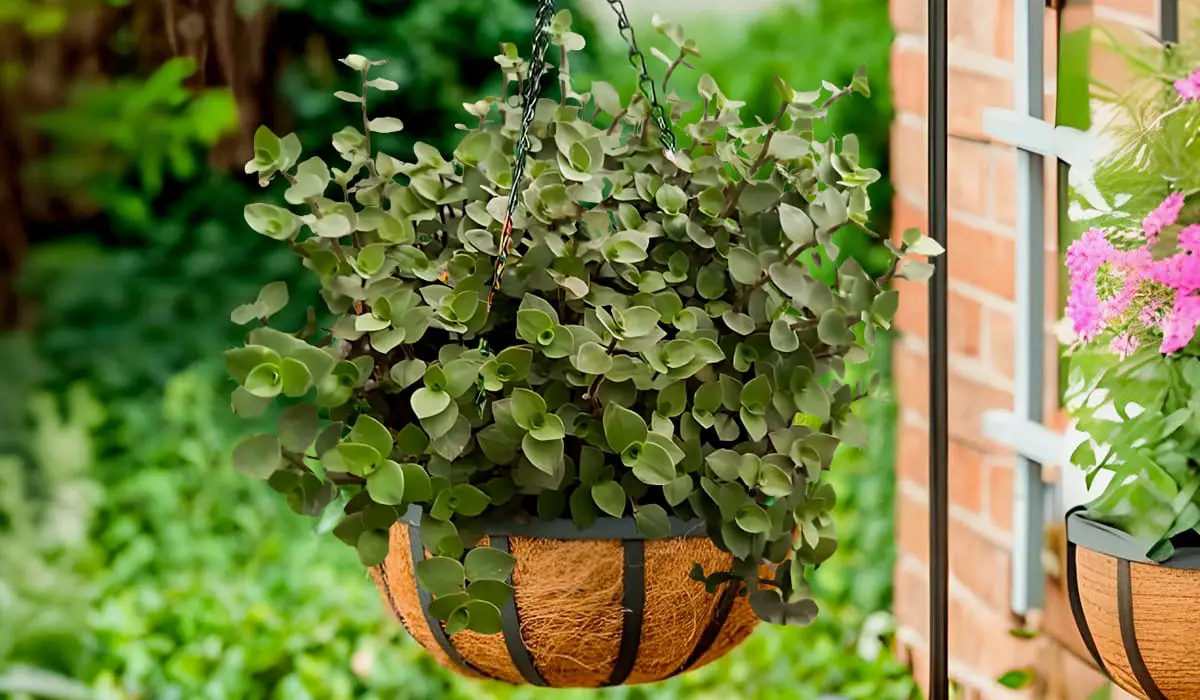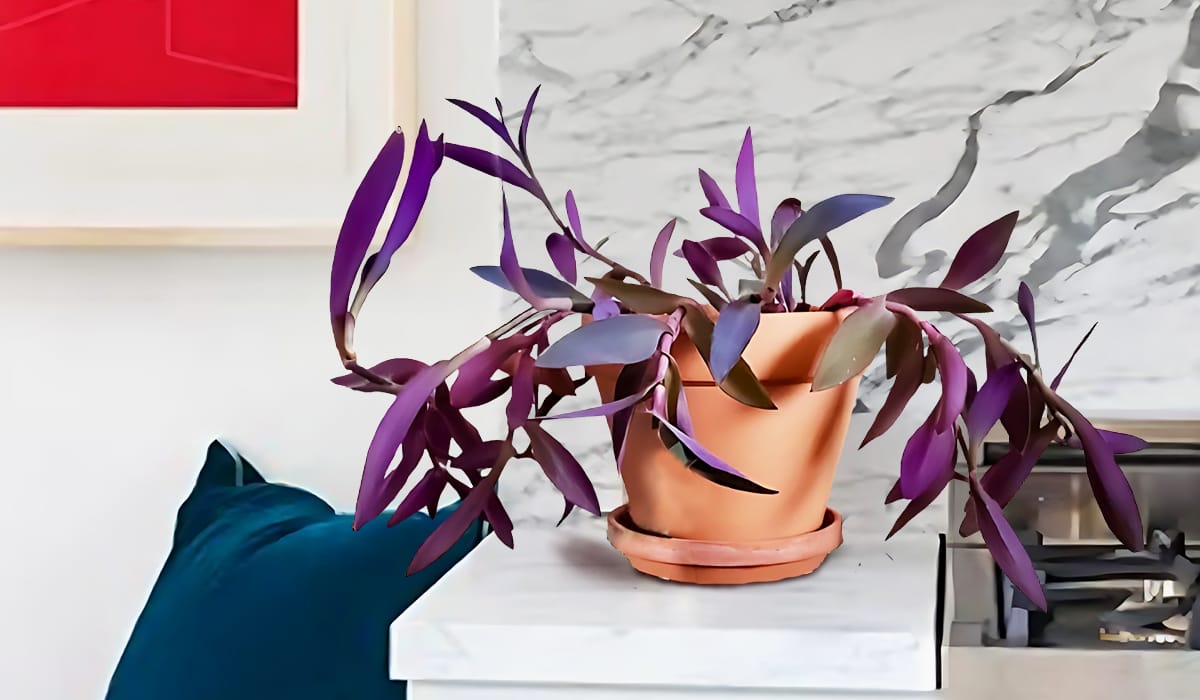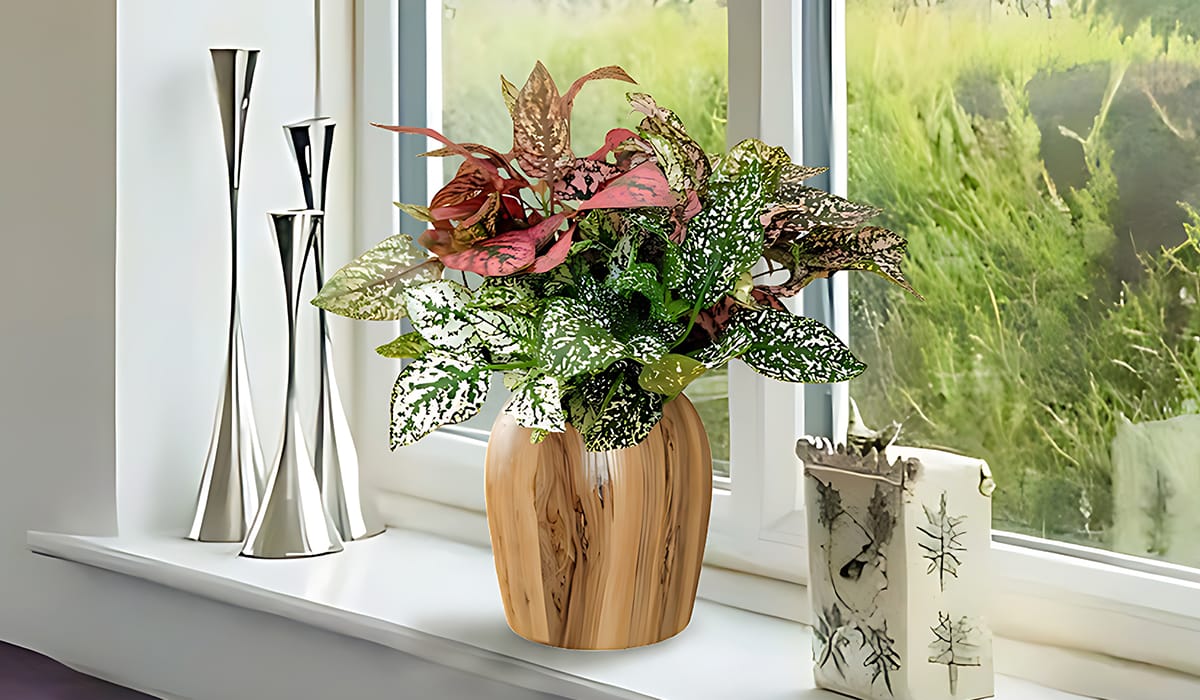Are you looking a good fiddle leaf fig and if You searching, how to propagate, grow, and care for fiddle leaf fig trees?
Great You have come to one of the best resources available on the internet.
We researched several books, blogs, and videos about the fiddle leaf fig and added our personal experiences then we wrote this article. If you read this full article properly. Then you will get a complete idea of the fiddle leaf fig tree and care of them. So if you are a plant lover we hope you will enjoy this article.
let's Introduce
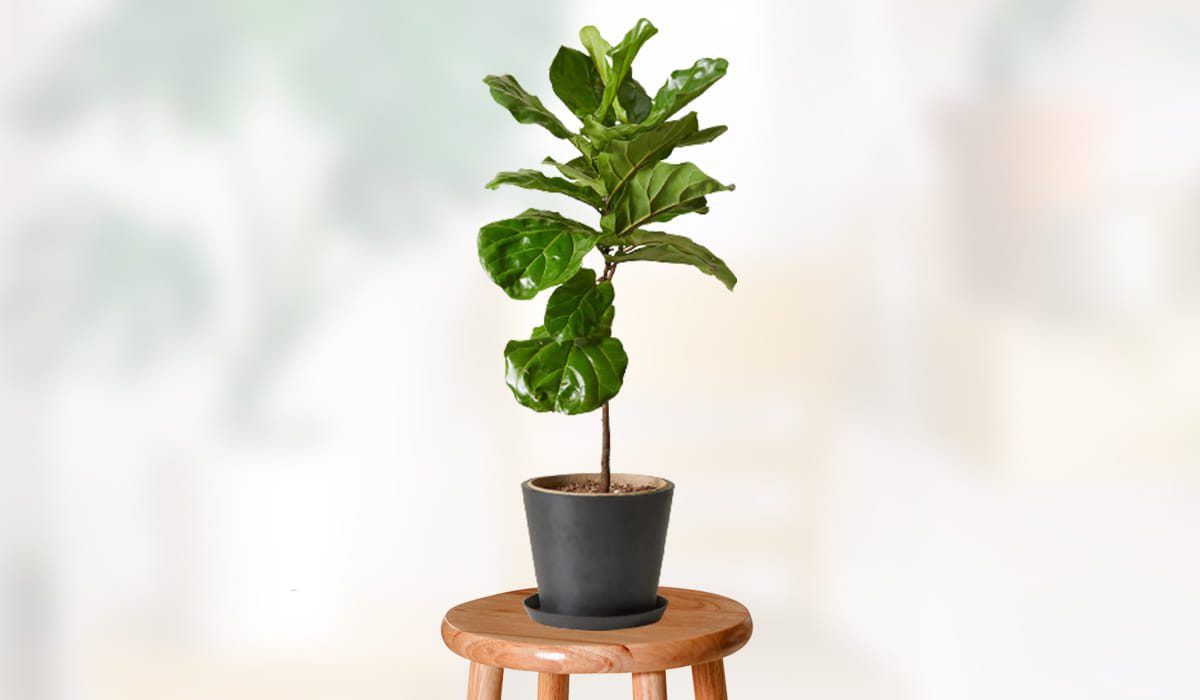
Fiddle Leaf Fig
The fiddle leaf fig tree is native to the tropical rainforests of West Africa. Fiddle leaf fig trees, scientifically known as Ficus lyrata, have become a beloved addition to many households. Their broad, glossy leaves and elegant appearance make them a popular choice among houseplant enthusiasts. If you're considering bringing one of these stunning trees into your home, you're in for a treat. In this comprehensive guide, we will walk you through everything you need to know about caring for a fiddle-leaf fig tree and keeping it thriving.
| Common Name: | Fiddle Leaf Fig |
| Botanical Name: | Ficus lyrata |
| Plant Type: | Evergreen tree or shrub. |
| Family: | Moraceae |
| Height: | Typically grows between 6 to 10 feet indoors, but can reach up to 40 feet in its native habitat. |
| Tolerate: | Tolerates bright, indirect sunlight; sensitive to cold drafts and overwatering. |
| Sun Exposure: | Prefers bright, indirect light but can adapt to some direct sunlight. |
| Mature Size: | Typically 6 to 10 feet indoors |
| Soil Type: | Well-draining potting mix with good aeration. |
| Soil pH: | Slightly acidic to neutral (pH 6-7) |
| Flower Color: | Insignificant |
| Native Area: | West Africa, specifically in tropical rainforests. |
| Bloom Time: | Infrequent indoor blooming; no specific bloom season. |
| Toxicity: | cats and dogs |
| Hardiness Zones: | USDA zones 10-12 |
How To Propagate Fiddle Leaf Fig
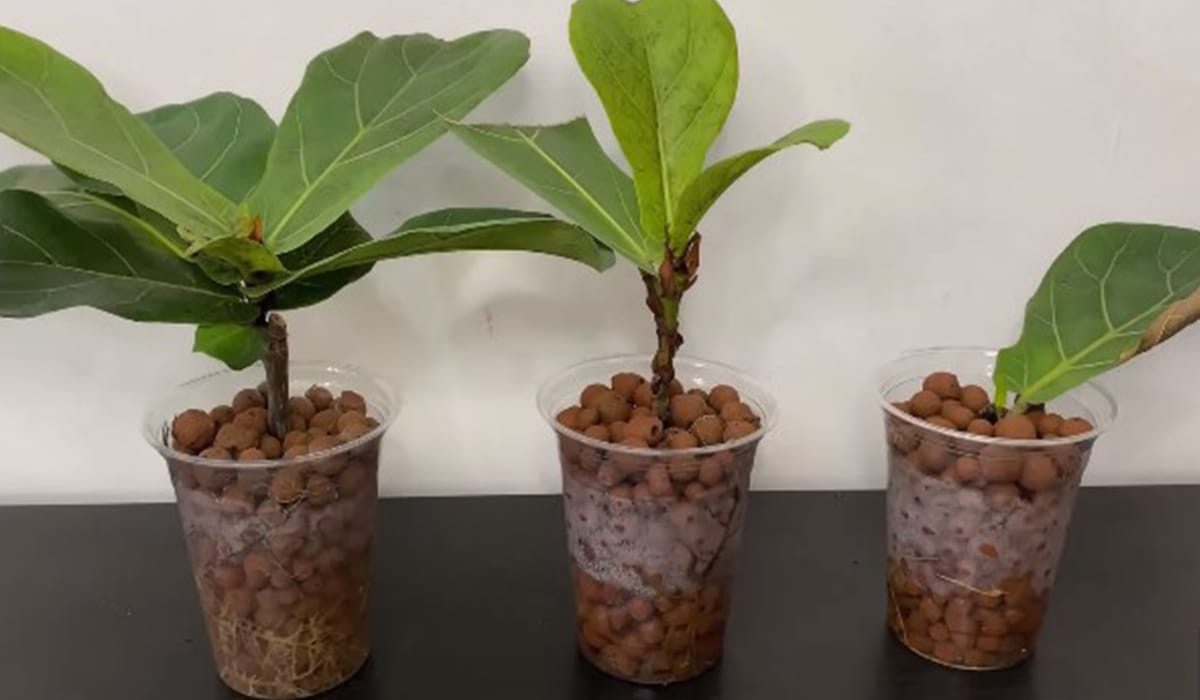
Fiddle Leaf Fig (Ficus lyrata) can be propagated through several methods, Today we will learn three methods stem cuttings, air layering, and Division :
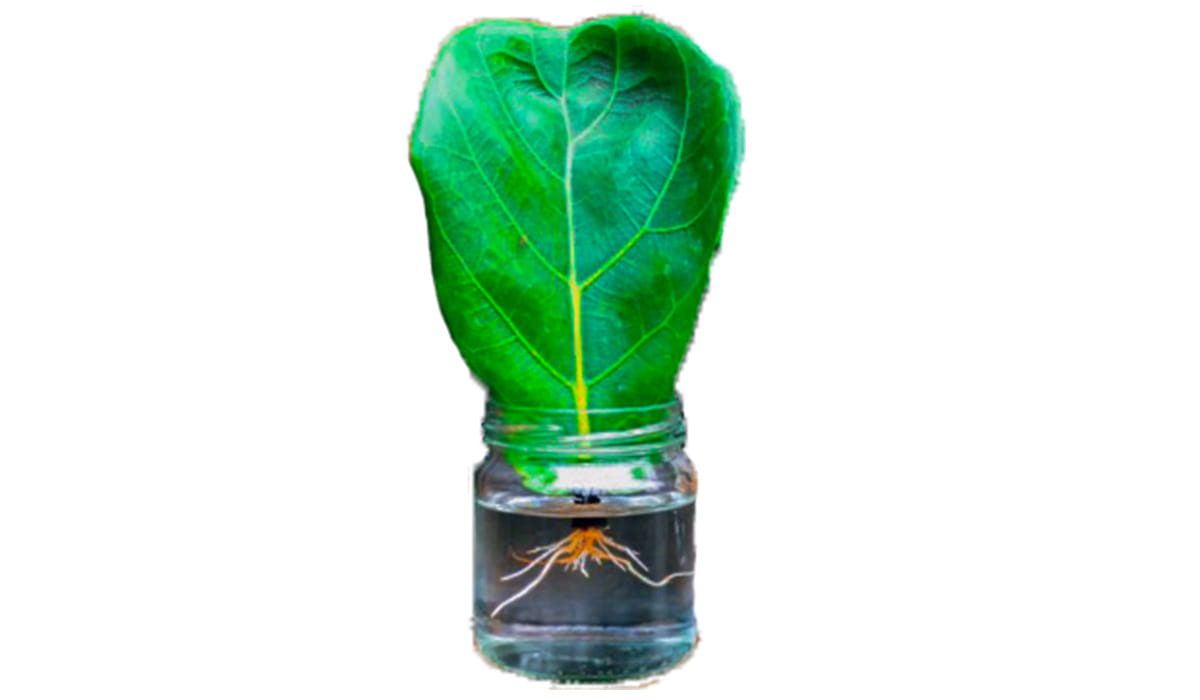
Stem Cuttings
Materials Needed:
- Pruning shears or a sharp knife
- Small pot with well-draining soil
- Rooting hormone (optional but helpful)
- Plastic bag or plastic wrap
- Rubber band or string
Follow These Steps:
- Selection of Stem Cutting: Start by choosing a healthy stem from the parent Fiddle Leaf Fig plant. Look for a stem that has at least one or leaves and a node. A node is a small bump or nub at the stem, generally discovered in which a leaf meets the stem.
- Cut the Stem: Using pruning shears or a pointy knife, make a clean, diagonal reduction simply beneath a leaf node. Ensure that the cutting is around 6-12 inches long. If you have rooting hormone, you can dip the cut end in it to promote root growth, but this is optional.
- Potting the Cutting: Fill a small pot with well-draining potting soil. Make a hollow inside the soil with a stick or your finger and insert the cutting, burying the node below the soil. Gently pat the soil across the reducing to steady it in place.
- Create a Mini-Greenhouse: Cover the pot and reduce it with a plastic bag or plastic wrap to create a Mini-Greenhouse effect. Secure the plastic around the pot with a rubber band or string. This allows excessive humidity across the cutting, which inspires root development.
- Provide the Right Environment: Place the potted reducing in a vicinity with bright, oblique light. Avoid direct sunlight, as it may damage the cutting. Maintain a consistent temperature and avoid drafts.
- Maintain Humidity: Mist the cutting and the inside of the plastic cover regularly to keep the humidity high around the cutting. Ensure that the soil stays continuously wet however now no longer waterlogged.
- Wait for Roots: It can take several weeks to a few months for roots to develop. To check for root growth, gently tug on the cutting; if it resists being pulled up, it is likely rooted.
- Transplant: Once the cutting has developed a good root system, you can transplant it into a larger pot filled with regular potting soil. Continue caring for it as you would a mature Fiddle Leaf Fig.

Air Layering
Materials Needed:
- Sharp knife or pruning shears
- Sphagnum moss
- Plastic wrap
- Twist ties or string
- Rooting hormone (optional but helpful)
Follow These Steps:
- Select a Healthy Stem: Choose a healthy stem from the parent Fiddle Leaf Fig plant that you want to propagate.
- Make a Cut: Use a sharp knife or pruning shears to make a small, shallow cut or scrape on the stem. This wound will encourage root formation.
- Apply Rooting Hormone (Optional): To promote root growth, you can dust the cut or wounded area with rooting hormone. This step is optional but can help accelerate the process.
- Prepare Sphagnum Moss: Wet a handful of sphagnum moss until it's thoroughly damp but not soaking wet. Squeeze out excess water.
- Wrap the Moss: Wrap the damp sphagnum moss around the cut area of the stem, ensuring that the wounded area is completely covered.
- Enclose in Plastic: Cover the moss with plastic wrap and steady it in region with twist ties or string. This creates a sealed, humid environment around the moss.
- Maintain Moisture and Monitor Rooting: Keep the moss consistently moist and regularly check for root development through the plastic wrap. You should see roots forming within several weeks to a few months.
- Cut and Transplant: Once you see a sufficient number of roots (several inches long), cut below the rooted area and plant it in a pot with regular potting soil. Continue caring for it as you would with a mature Fiddle Leaf Fig.
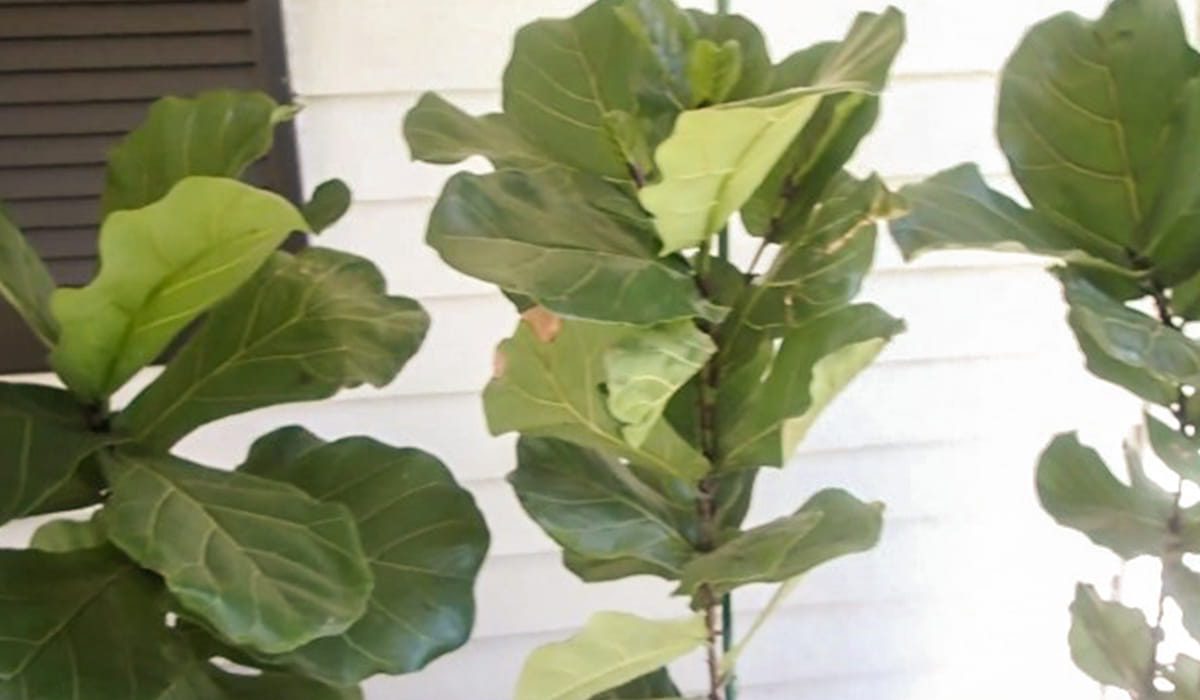
Division
Materials Needed:
- Pruning shears or a sharp knife
- Larger pot with well-draining soil
Follow These Steps:
- Remove the Parent Plant: Carefully remove the parent Fiddle Leaf Fig from its current pot, preserving as many roots as possible.
- Divide the Root Ball: Use pruning shears or a sharp knife to divide the root ball into separate sections. Each section should have its roots and some attached stems and leaves.
- Plant Each Division: Plant each divided section in its own pot filled with well-draining potting soil. Ensure that the roots are adequately covered with soil.
- Water and Care: Water the newly potted divisions and care for them as you would with mature Fiddle Leaf Figs. Provide them with the proper light, humidity, and temperature conditions.
These are the detailed steps for propagating Fiddle Leaf Figs using stem cuttings, air layering, and division. Each method has its advantages, so you can choose the one that best suits your preferences and expertise level. With proper care, you can successfully propagate new Fiddle Leaf Fig plants and expand your indoor garden.
Fiddle Leaf Figs Care Tips

Caring for a Fiddle Leaf Fig (Ficus lyrata) involves providing the right environment, light, water, nutrients, and occasional maintenance. Here's a comprehensive guide on how to care for your Fiddle Leaf Fig:
1. Light:
- Bright, Indirect Light: Fiddle Leaf Figs thrive in bright, oblique light. Place your plant close to a window with filtered sunlight. Avoid direct sunlight, as it may scorch the leaves.
2. Watering:
- Consistent Moisture: Keep the soil consistently moist but not waterlogged.Water while the pinnacle inch of soil feels dry to the touch. In general, you'll water more frequently in the growing season (spring and summer) and less in the dormant season (fall and winter).
- Use Room-Temperature Water: Water with room-temperature water to avoid shocking the plant.
- Drainage: Ensure your pot has good drainage to prevent water from sitting at the bottom, which can lead to root rot.
3. Humidity:
- Maintain Humidity: Fiddle Leaf Figs prefer a humid environment. You can increase humidity by misting the leaves regularly or placing a humidity tray near the plant.
4. Temperature:
- Moderate Temperatures: Keep your Fiddle Leaf Fig in a room with temperatures between 65-75°F (18-24°C). Avoid exposing it to bloodless drafts or surprising temperature changes.
5. Soil:
- Well-Draining Mix: Use a well-draining potting mix that provides good aeration. A mix of potting soil, perlite, and orchid bark can work well.
6. Fertilization:
- Balanced Fertilizer: Feed your Fiddle Leaf Fig with a balanced, water-soluble fertilizer at some point of the developing season (spring and summer) each 4-6 weeks. Reduce or eliminate fertilizer during the dormant season.
7. Pruning:
- Regular Pruning: Prune your Fiddle Leaf Fig regularly to maintain its shape and remove any dead or yellowing leaves. This encourages bushier growth.
8. Pests and Diseases:
- Monitor for Pests: Keep an eye out for common pests like mealybugs and spider mites. If you notice any pests, remove them with a gentle spray of water or treat them with insecticidal soap.
- Prevent Overwatering: Avoid overwatering to prevent root rot, which can be a common issue with Fiddle Leaf Figs.
9. Repotting:
- Repot When Needed: Repot your Fiddle Leaf Fig when it outgrows its current container, typically every 2-3 years. Choose a slightly larger pot with good drainage.
10. Support and Staking:
- Stake Tall Plants: If your Fiddle Leaf Fig becomes top-heavy or starts to lean, provide support or stake it to help maintain an upright growth habit.
11. Toxicity:
- Keep Away from Pets: Fiddle Leaf Figs are toxic to pets (cats and dogs) if ingested. Place them in a location where your pets can't reach them.
12. Hardiness Zones:
- Indoor Plant: While Fiddle Leaf Figs are typically grown as indoor plants, they are hardy in USDA zones 10-12 if planted outdoors.
By following these care guidelines, you can help your Fiddle Leaf Fig thrive and grow into a beautiful, healthy houseplant. Remember that these plants can be a bit finicky, so attentive care and adjustments to their environment are key to their success.
Fiddle Leaf Fig Varieties

Fiddle Leaf Fig 'Ficus lyrata'
This is the standard and most common variety of Fiddle Leaf Fig. It features large, violin-shaped leaves with prominent veining.

Ficus lyrata 'Compacta'
Also known as the Compact Fiddle Leaf Fig, this variety has smaller leaves and a more compact growth habit compared to the standard Ficus lyrata.

Ficus lyrata 'Bambino'
Bambino is a dwarf variety of Fiddle Leaf Fig. It has smaller leaves and a more bushy growth pattern, making it suitable for smaller spaces.

Ficus lyrata 'Little Fiddle'
This is another compact variety with smaller leaves and a more manageable size for indoor cultivation.
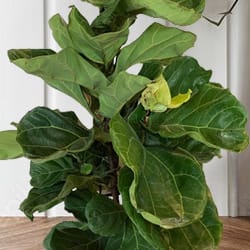
Ficus lyrata 'Suncoast'
The Suncoast variety is known for its broader leaves and more substantial appearance compared to the standard Fiddle Leaf Fig.

Ficus lyrata 'Variegata'
This cultivar features variegated leaves with white or yellowish marbling or streaks, adding a unique visual appeal to the plant.

Ficus lyrata 'Green Gem'
Green Gem is a compact variety with smaller leaves, making it a good choice for those with limited space.
Common Fiddle Leaf Figs Tree Problems: And Solution

Fiddle Leaf Figs (Ficus lyrata) are beautiful but can be somewhat finicky when it comes to their care. They are susceptible to a few common problems, but with prompt attention and the right solutions, you can keep your Fiddle Leaf Fig healthy. Here are some common problems and their solutions:
1. Overwatering:
Problem: Yellowing leaves, leaf drop, and root rot can occur due to overwatering.
Solution:
- Allow the top inch of soil to dry out before watering again.
- Ensure your pot has good drainage to prevent water from accumulating at the bottom.
- Empty the saucer beneath the pot after watering to avoid root rot.
- Adjust your watering frequency to the season, reducing it in the dormant winter months.
2. Underwatering:
Problem: Leaves may turn brown at the edges, droop, or develop brown spots due to underwatering.
Solution:
- Check the moisture level by sticking your finger into the soil; water when the top inch is dry.
- Consider using a self-watering pot or a moisture meter to help maintain consistent soil moisture.
- Don't let the plant sit in standing water, but ensure proper drainage.
3. Low Humidity:
Problem: Fiddle Leaf Figs prefer higher humidity levels and can develop brown, crispy leaf edges in dry indoor environments.
Solution:
- Increase humidity by misting the leaves regularly.
- Place a humidity tray filled with water and pebbles near the plant.
- Use a room humidifier to maintain a consistent humidity level.
4. Poor Lighting:
Problem: Insufficient light can lead to leggy growth, sparse foliage, and reduced overall health.
Solution:
- Place your Fiddle Leaf Fig in a spot with bright, indirect light.
- Rotate the plant periodically to ensure even growth on all sides.
- Avoid direct sunlight, which can scorch the leaves.
5. Pests:
Problem: Common pests that can affect Fiddle Leaf Figs include mealybugs and spider mites.
Solution:
- Inspect your plant regularly for signs of pests, such as webbing, tiny insects, or yellowing leaves.
- Isolate an infested plant to prevent the pests from spreading to other plants.
- Remove pests by gently washing the leaves with a stream of water or treating with insecticidal soap.
6. Dropping Leaves:
Problem: Sudden leaf drop can occur due to environmental changes, stress, or overwatering.
Solution:
- Maintain a consistent environment for your plant, avoiding sudden temperature or lighting changes.
- Reduce stress by minimizing physical disturbances like moving or repotting the plant.
- Adjust your watering routine if overwatering is the cause.
7. Brown Spots or Yellowing Leaves:
Problem: Brown spots and yellowing leaves can result from various factors, including overwatering, underwatering, or nutrient deficiencies.
Solution:
- Check the soil moisture and adjust your watering habits accordingly.
- Ensure proper drainage and aeration in the soil.
- Feed your Fiddle Leaf Fig with a balanced fertilizer during the growing season.
- Prune damaged or yellowing leaves to encourage new growth.
By addressing these common problems promptly and providing your Fiddle Leaf Fig with the right care, you can help it thrive and remain a beautiful addition to your home. Regular monitoring and attentive care are essential for maintaining the health and vitality of your plant.
wrapping up
Growing a fiddle leaf fig tree can be a rewarding experience, adding elegance and greenery to your home. Remember that they can be a bit finicky but with the right care and attention to their needs, your fiddle leaf fig can flourish for years to come. Enjoy the beauty of this remarkable houseplant as it thrives in your living space.
Consider expanding your indoor plant collection with other easy-to-care-for plants like
Each of these plants offers its unique charm and benefits.
Thanks for reading this article. if you have any questions must comment and contact our team. don't forget to share this article with your friends.

